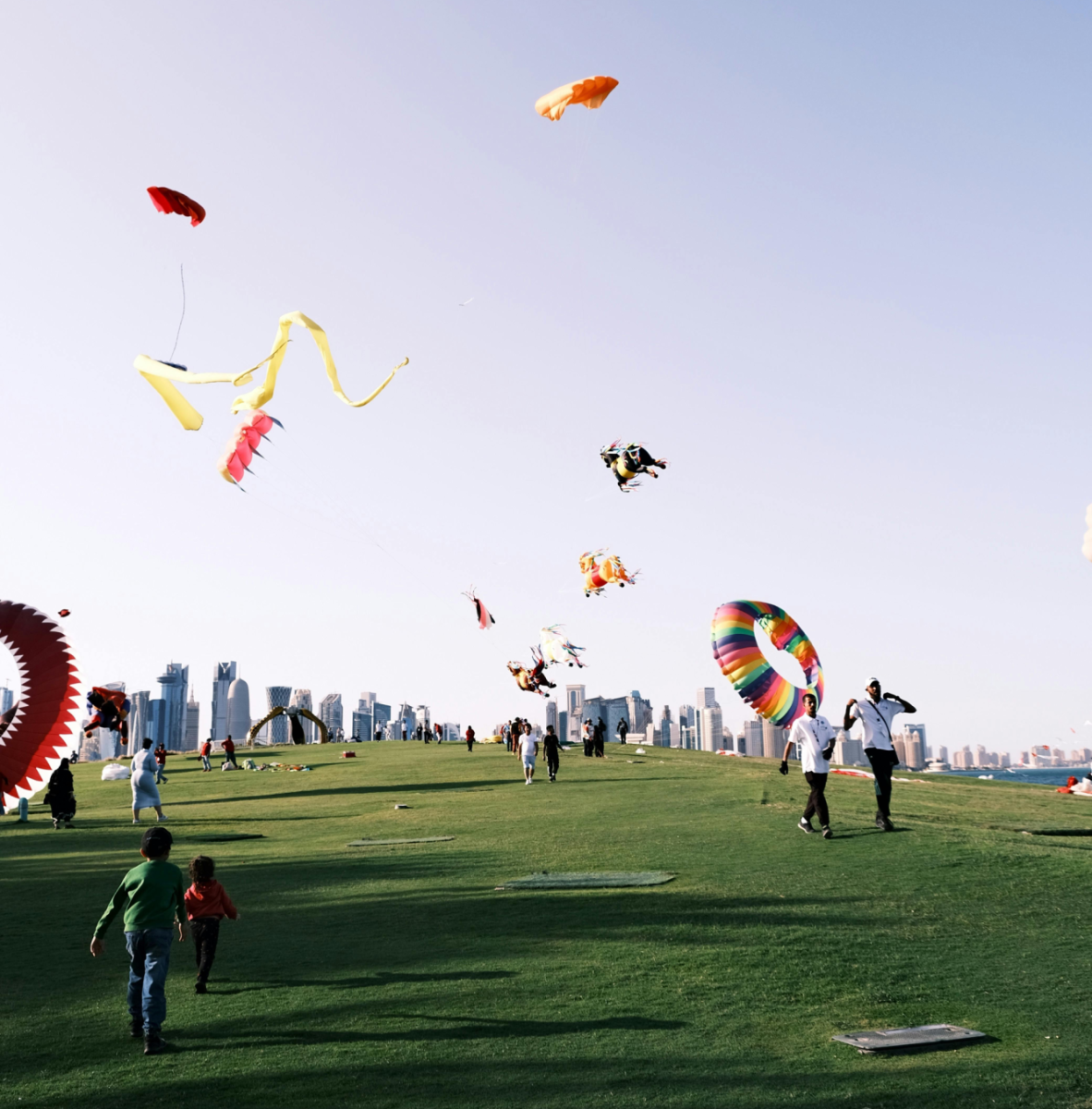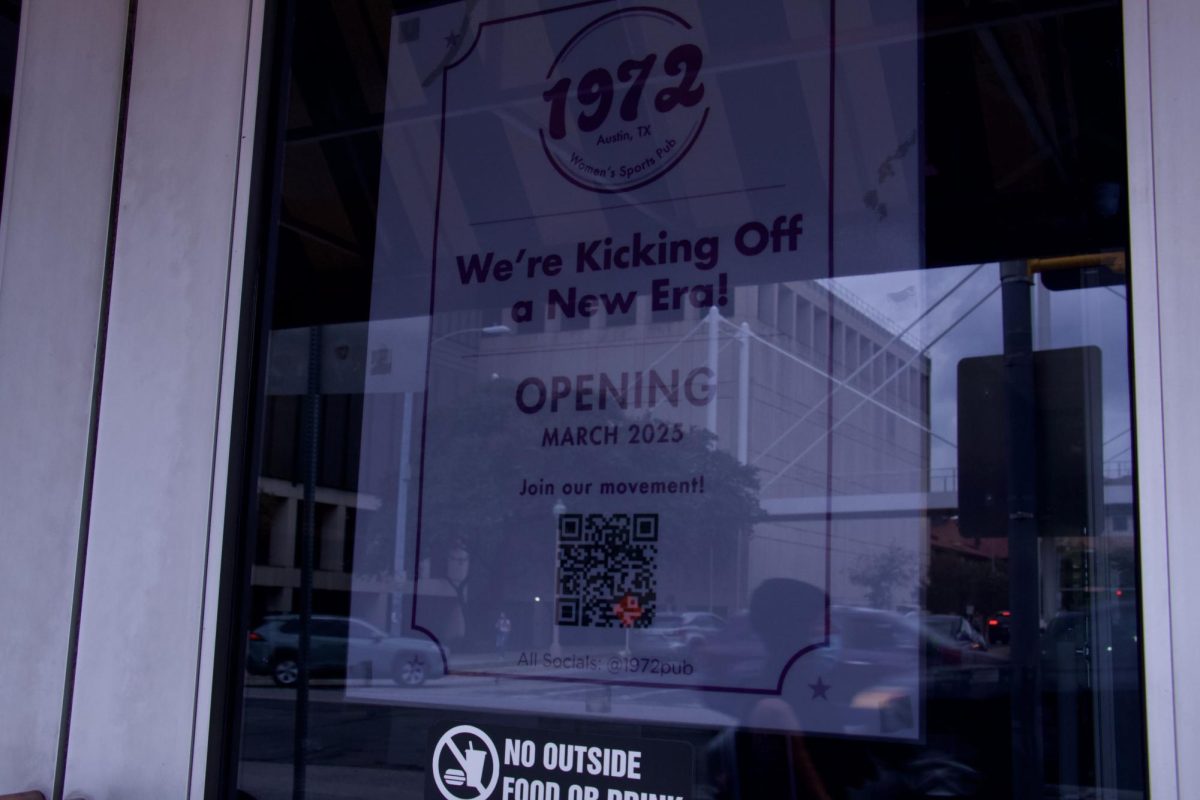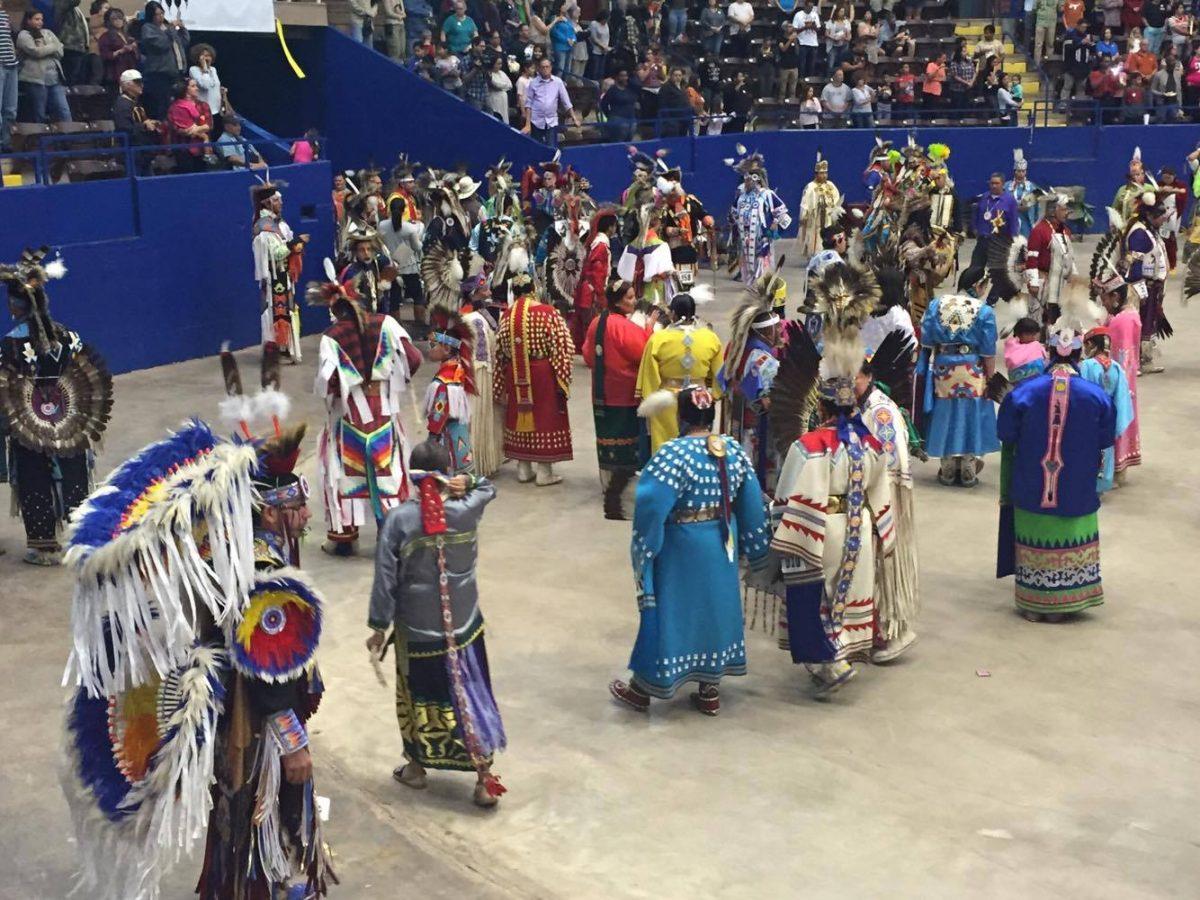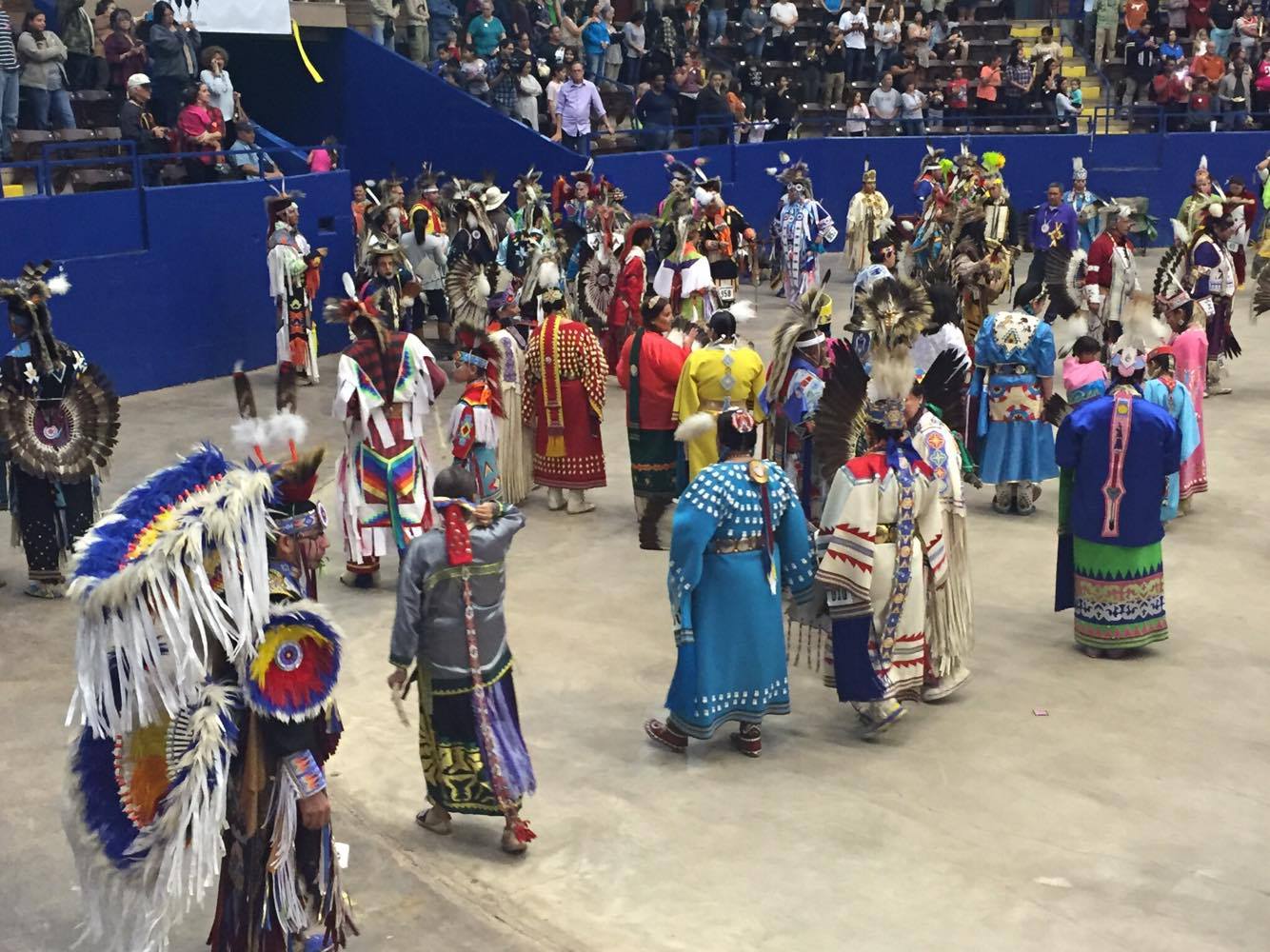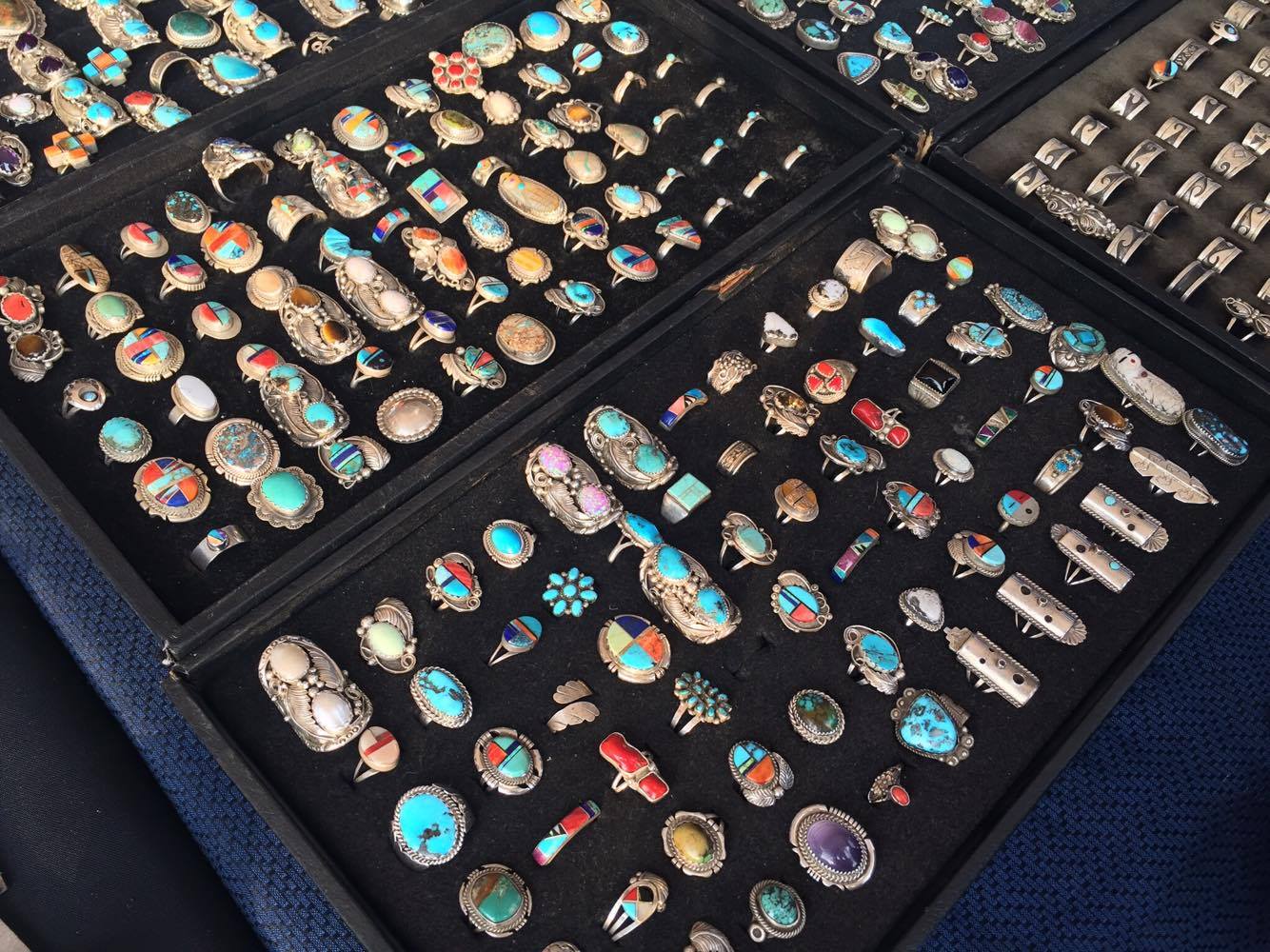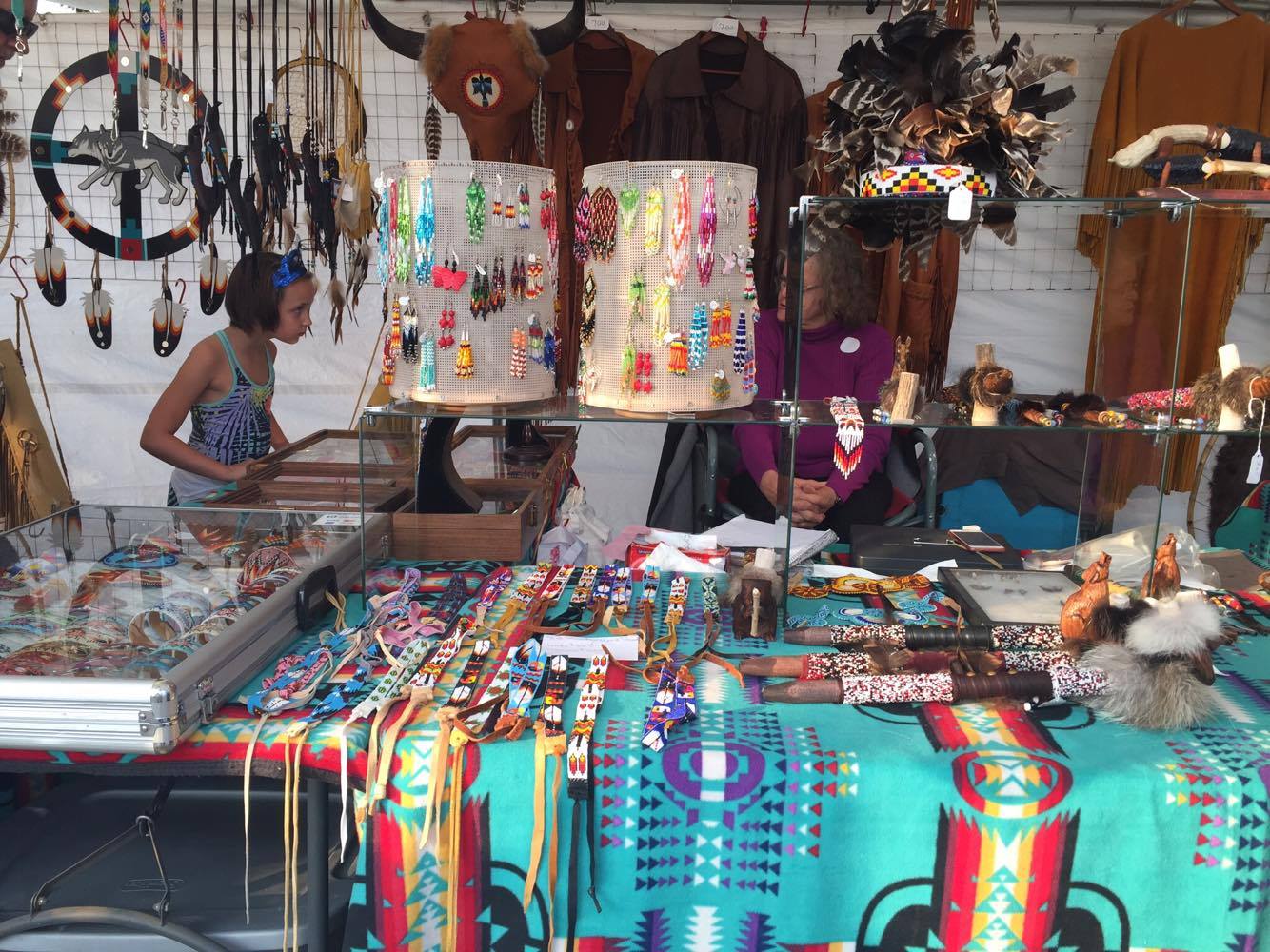On Saturday, Nov. 5, Great Promise for American Indians hosted their 25th Annual Powwow and American Indian Heritage Festival—the largest single-day powwow in the country.
Story by Danielle Drews
Photos by Danielle Drews and Jacqueline Ramos
Performers prepare for the Grand Entry.
Over 300 dancers, 100 artisans, and 13 food vendors gathered at the Travis County Exposition Center. An estimated 40,000 spectators attended the event. People from across the nation came to celebrate their heritage and culture.
80 to 85 tribes were represented. They ranged in age from toddlers, or the tiny tot category, to the Golden Age category which included dancers over the age of 60. “We really are serving as a conveyor of all the different native people in Austin,” executive director of Great Promise Lois Duncan says. “We are the main core that people can come together and celebrate their native ways.”
Drums, tiny bells and singing voices could be heard before entering the Exposition Center. The sights inside caused many visitors to pause in wonder. Dancers twirled gracefully, creating wheels of bright colors to the rhythmic beating of the drum. Their regalia or outfits were unique and handmade with different naturalistic pattern complimented by bright beads, feathers or embroidery. Tobine Alec has been dancing for about 30 years and says his regalia was made by his family, mostly his mom and aunts.
Outside the center, artisans displayed a variety of handmade items in the Indian Market. Items ranged from intricately-carved jewelry to dream catchers, blankets, pottery and paintings. Each artisan proudly displayed a part of their heritage. Techniques have been sustained for generations. Sharon John was an artisan who displayed jewelry and pottery. “I learned from my mom,” John says. “I started at a young age when I had more patience.” Now, John says she can make a bracelet in under five minutes.
Ring designs varied in size and shape.
A variety of crafts were available at the market. Every booth had something that made it stand out from the rest. Not one pair of earrings was the same and each had an assortment of different colors that enchanted beholders of all ages—small children grabbed for the pieces they thought were the prettiest while adults also expressed their wonder.
The food vendors exhibited their wares outside, filling the air with the tantalizing smells of unknown spices and beckoning people to stop and see what they had to offer. The cooks at the stands worked to prepare their traditional Native foods since that morning. Chairs and tables in the open areas invited spectators to relax while enjoying their treats and mingling with dancers.
Dancers and spectators interacted the most on the dance floor of the Center during an inter-tribal dance. Different members from all tribes came out on the floor, and audience members could join. Dancers welcomed the newcomers and were ready to share part of their culture. Audience members were eager to learn and experience the beat of the drum for themselves. There were many styles of dancing and some audience members simply shuffled their feet. Everyone had a smile on their face and seemed to be thoroughly enjoying the moment.
Handmade Native jewelry was sold at the market.
The event took on a more serious note when the head MC turned the conversation to the situation in Dakota. “The Standing Rock tribe were the first ones to step up not just to protect their tribe but all who use the river, and our four-legged brothers and sisters,” the MC says. “We are the ones that are the caretakers of Mother Earth.” Spectators and dancers alike appeared to agree with the concluding words of “say no to the pipeline.”
After this conversation, the event transitioned into more singing and drumming. However, the audience members were left with the impact of the MC’s words. They recognized the gravity of the situation in Dakota and why this celebration of vibrant and beautiful cultures may be especially important.





